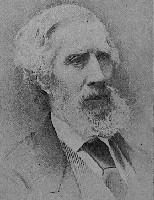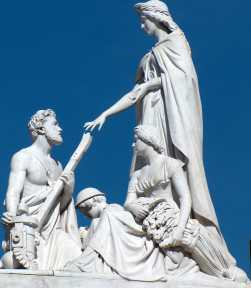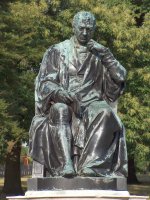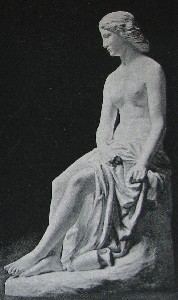William Calder Marshall (1813-1894)
The sculptor William Calder Marshall's best known work today is his group for the Albert Memorial, depicting Agriculture. He was born in Edinburgh, studied first there, then in London at the Royal Academy Schools and under E. H. Baily and Chantrey, spent a period of Italy from 1836, and then returned to London, where he remained for the rest of his life. He was elected ARA in 1845, and full Academician in 1852.
Agriculture for the Albert Memorial, by Calder Marshall.
His specialty was figures from mythology and ideal figures. He favoured the Greek profile, and a generally classical look, but with a strong tendency in his female subjects towards purity, softness and girlishness, an affectation being their perfectly conical breasts, without any effect of gravity. Such splendid characteristics lent themselves well to the popular taste, and hence reproduction in Parian porcelain for collectors, and a number of his works were popularised in this format - Hermione, Hebe, The Dancing Girl Reposing, Sabrina, and so forth. As well as girls, and a few heroes, he also produced popular sculptures of children, in particular another work reproduced in Parian called the Broken Pitcher.
Jenner.
Calder Marshall won some important commissions for public art, including as well as the Agriculture
group already mentioned, portrait statues of Jenner, now in Kensington Gardens
(previously sited in Trafalgar Square), Peel for Manchester (discussed on this page),
with two allegorical girls, the pediment of Bolton Town Hall showing the spirit of the city with
Manufacturing and Commerce etc, and also in Bolton a fine statue of Samuel Crompton, and back in London, sculpture for the entrance of
Temple Gardens towards the Embankment, and the much battered
portrait bust of Newton formerly in Leicester Square but which I think has been removed at some time pre-Covid.
He also made two figures for the Houses of Parliament, and a frieze in St Paul's Cathedral. He
retired as an academician in 1892, and after his death, his London studio in Ebury Street was
found to contain casts of nearly all his important sculptures.
Hebe in Disgrace a typical work by Calder Marshall.



